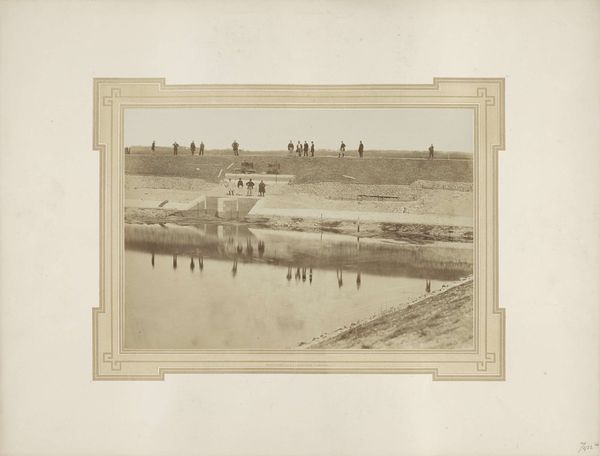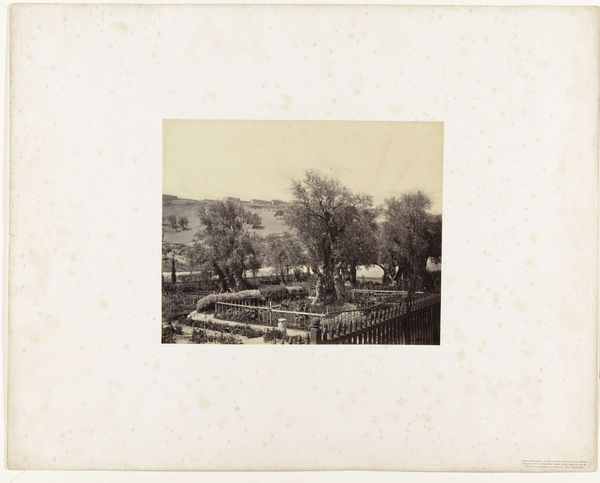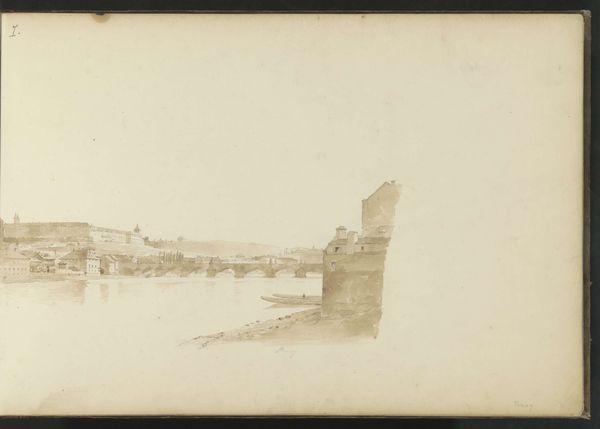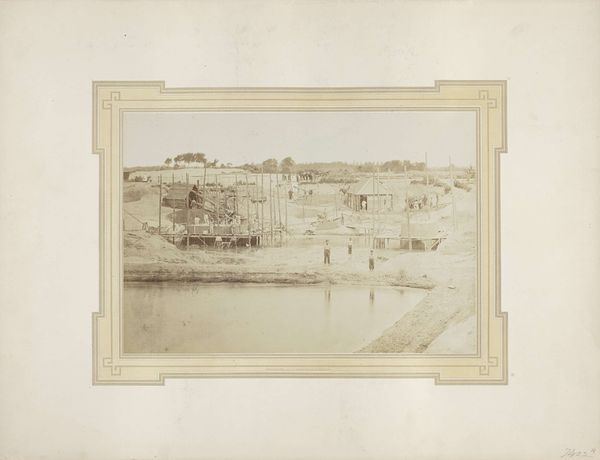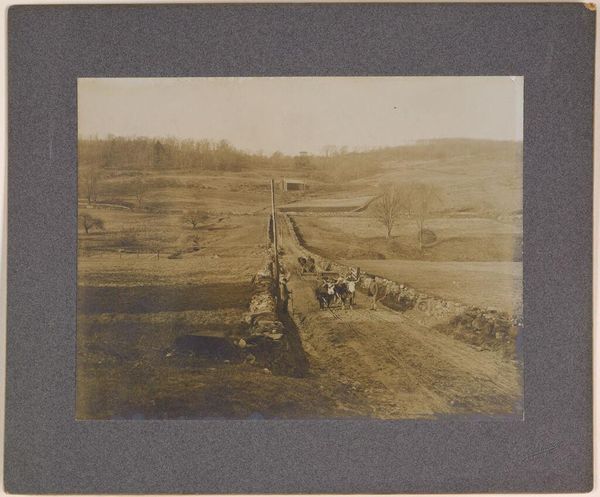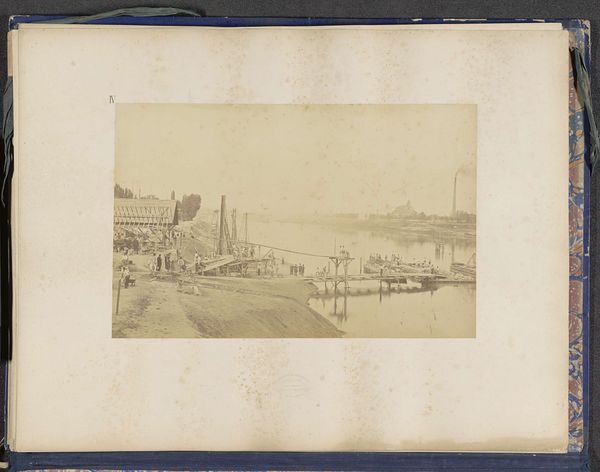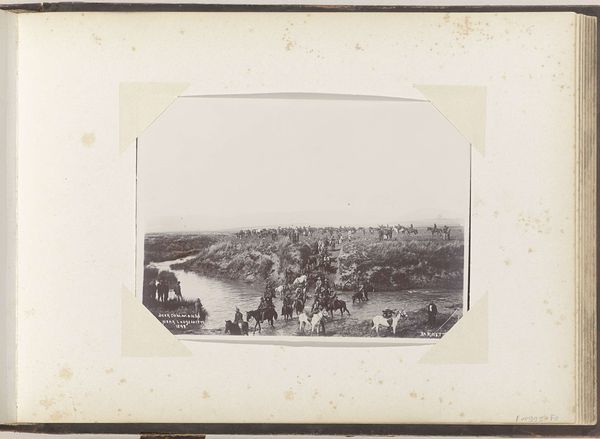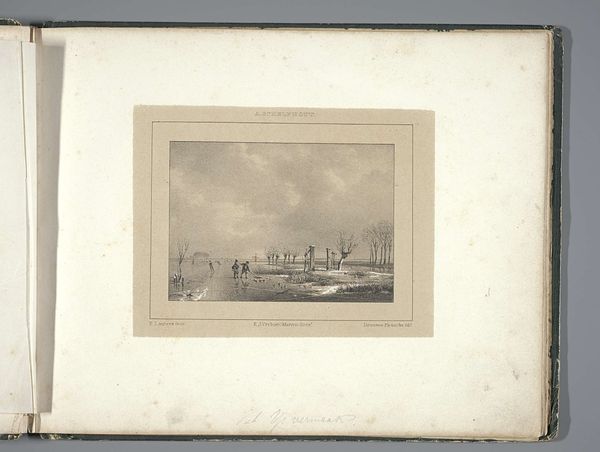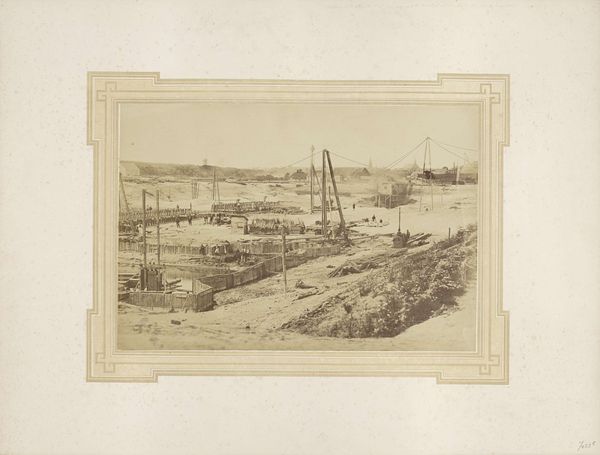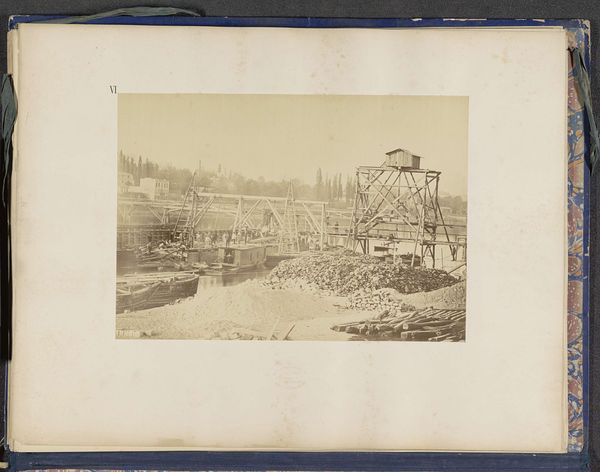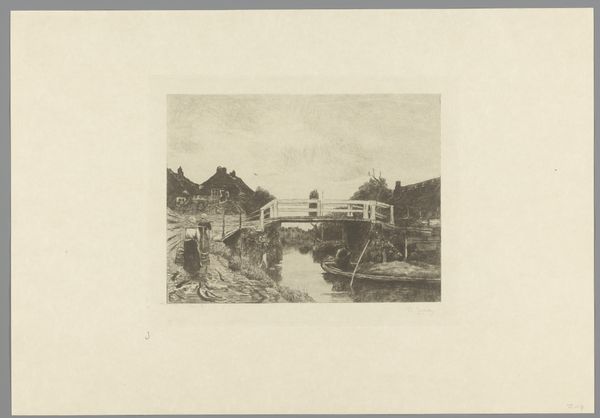
print, photography
# print
#
landscape
#
photography
Dimensions: height 255 mm, width 370 mm
Copyright: Rijks Museum: Open Domain
Editor: Here we have A.L. Preuninger's "Wachtsluis bij de uitwateringssluis ten westen van Vlissingen," a photograph from 1869. The monochromatic palette lends it a somewhat austere feeling. It captures what seems to be a landscape undergoing some man-made changes, or construction. What do you notice, and how would you approach interpreting a work like this? Curator: Structurally, I'm immediately drawn to the stark contrast between the geometric forms of the architecture and the organic textures of the earth and water. The artist has meticulously composed the image to emphasize this duality, note how the receding lines create a rigorous sense of perspective. Semiotically, one might interpret this as a commentary on man's imposition upon nature. How do you read the balance of light and shadow? Editor: The shadows give a sense of depth and weight to the structure, especially the arches, but almost flatten the background. Does the use of photography as a medium at this time change your perception? Curator: Certainly. Considering the limitations of early photographic processes, Preuninger has skillfully manipulated light and composition to achieve a remarkable level of detail and tonal range. This careful attention to the medium elevates it beyond mere documentation, approaching artistic expression. It prompts a consideration: Is the 'landscape' here truly the subject, or is it an investigation into form, texture, and the very nature of representation itself? Editor: That's a perspective I hadn't considered. I was so focused on the subject that I overlooked the photographer's deliberate manipulation of the medium itself. Thanks, this makes me want to explore how early photography shaped our view of the world. Curator: Indeed, and focusing on these fundamental formal elements gives insight into much of the image's qualities.
Comments
No comments
Be the first to comment and join the conversation on the ultimate creative platform.
